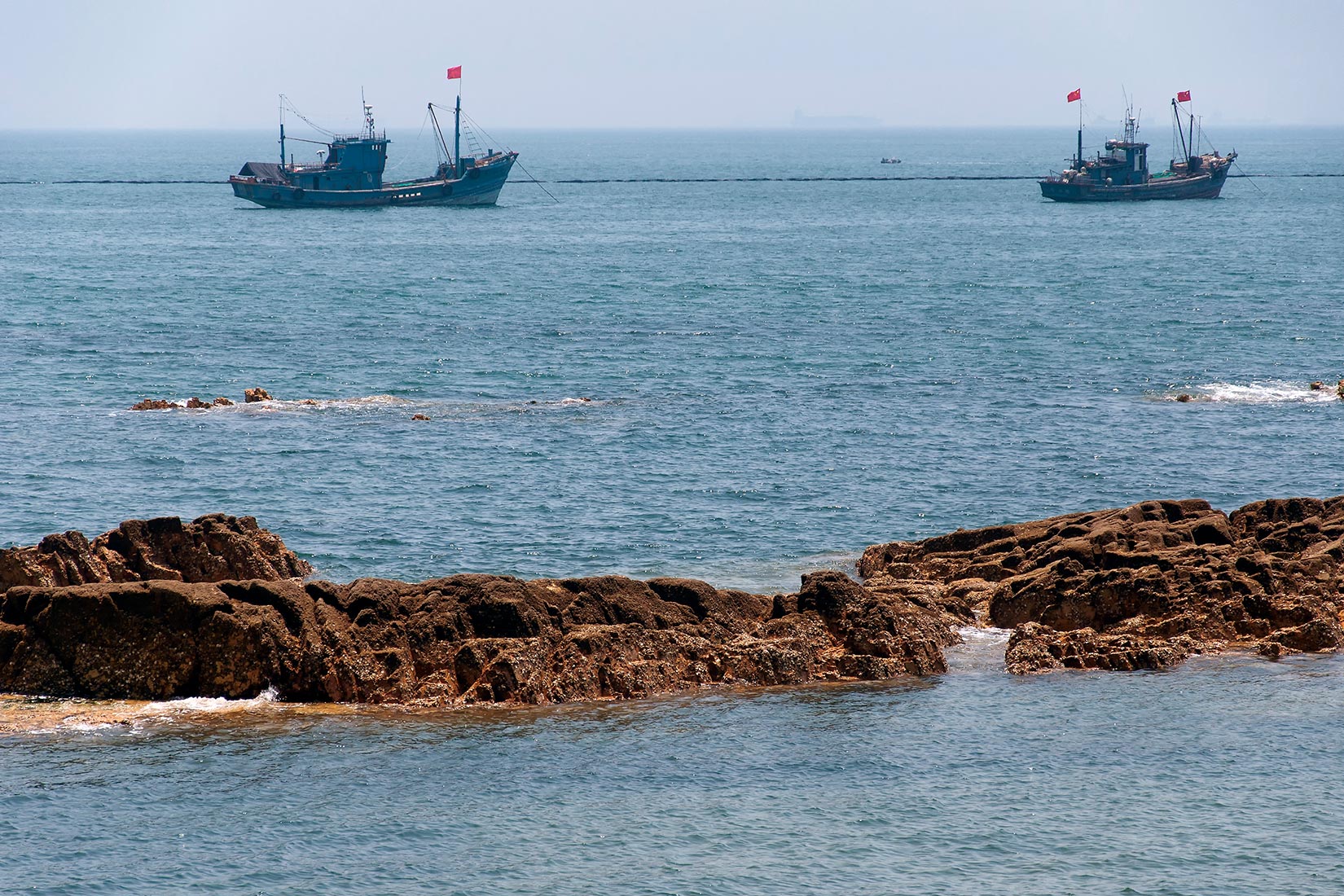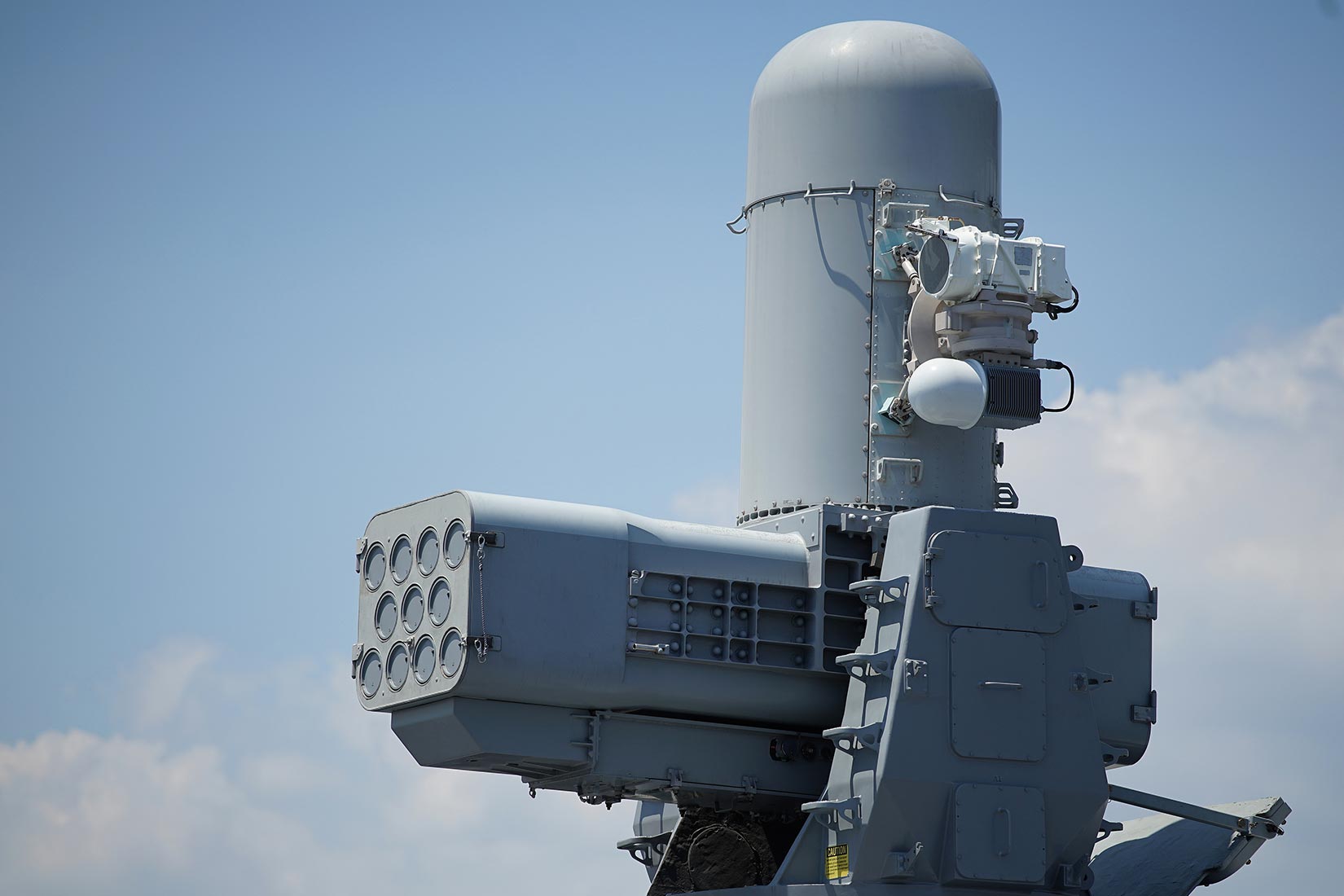Introduction
China Coast Guard (CCG) activity in the waters around the Senkaku Islands escalated significantly in 2020. CCG vessels appeared in the Senkaku Islands’ contiguous zone, just outside the territorial waters, for a record 333 days of 2020, according to statistics from the Japan Coast Guard[1]. CCG ships intruded into the territorial waters on 29 days, and in October remained there for 57 hours, the longest such intrusion. In addition, there were six incidents in which Japanese fishing boats operating in the territorial waters around the Senkaku Islands were approached and harassed by CCG vessels, and Japan Coast Guard patrol ships cut between the Japanese fishing boats and CCG ships to ensure the safety of the fishing vessels. Whenever China attempted to carry out activities that might seem like law enforcement targeting Japanese ships[2], as well as remaining in the territorial waters, it could no longer be considered as innocent passage[3], and the Japanese government repeatedly protested through diplomatic channels.
Amid such deteriorating circumstances, China’s domestic law governing these CCG activities came into effect on February 1. The CCG was established within the State Oceanic Administration in 2013 by integrating the maritime law enforcement functions that had been dispersed across Border Control (Ministry of Public Security), the State Oceanic Administration (Ministry of Land and Resources), the Bureau of Fisheries (Ministry of Agriculture and Rural Affairs), and the General Administration of Customs. In 2018 it was restructured as a part of the People’s Armed Police (PAP) under the Central Military Commission. Although it was determined that CCG would handle maritime law enforcement and the protection of maritime rights and interests, the organization had been operating without an enacted domestic law. In November 2020, the National People’s Congress (NPC) published a draft of the Coast Guard Law of the People's Republic of China, which was adopted by the NPC with amendments on January 22, 2021, and came into effect on February 1. The law placed the CCG as an important maritime armed force that is responsible for securing maritime interests, maritime law enforcement, and defense operations, and placed it under the command of the Central Military Commission[4].
What impact will the CCG Law have on the CCG’s activities in the South China Sea and the East China Sea, where China’s maritime expansionism has been most striking and the CCG’s actions are considered problematic? This article analyzes the CCG Law[5] and points out that its function is to legitimize CCG activities that do not have a clear legal basis under international law by providing the CCG much broader authority beyond existing international law. In addition, it will consider the implications for CCG activity in the waters around the Senkaku Islands.

Authority lacking a legal basis in international law
The most significant problem with the CCG Law is that the scope of its envisioned application and enforcement is not consistent with the scope of the jurisdiction and rights of coastal states set out in the United Nations Convention on the Law of the Sea (UNCLOS) and other international law. For example, UNCLOS defines coastal states’ rights and obligations based on maritime area, and a coastal states’ sovereignty at sea is stipulated as extending 12 nautical miles from its baseline[6]. The regulations of coastal states in the contiguous zone beyond territorial waters are limited to matters related to customs, fiscal, immigration, or sanitary laws and regulations[7]. In the exclusive economic zone, they are limited to sovereign rights over natural resources and jurisdiction over the establishment of things such as artificial islands, marine scientific research, and the protection and preservation of the marine environment[8].
However, the draft CCG Law released in November ignored this legal regime and uniformly defined these waters as under the jurisdiction of the People’s Republic of China. It sets out the geographical scope of the law’s application as “internal waters, territorial waters, contiguous zones, exclusive economic zones, the continental shelf and other waters under the jurisdiction of the People’s Republic of China.”[9] Although this definition was ultimately removed, the Supreme People’s Court, China’s equivalent to the Supreme Court, has issued similar rulings on China’s jurisdictional waters, so this interpretation will likely stay in place[10]. The final version of the CCG Law stipulates that the CCG can exercise its authority in “the sea areas under the jurisdiction of the People’s Republic of China,” so the CCG is able to operate in all these waters without distinguishing the maritime zones set out in UNCLOS. For example, Article 25 of the law authorizes the designation of maritime security zones in the "waters under the jurisdiction of China" to prohibit or restrict the passage or stay of ships for security reasons. UNCLOS, which grants states sovereignty and the right to suspend the passage of ships within territorial waters[11], contains no provisions for the establishment of such waters in the exclusive economic zone, which is governed by freedom of navigation. Furthermore, in some cases the waters “under the jurisdiction of China” overlap with areas claimed by other coastal states, such as the Nine-Dash Line in the South China Sea[12]. Providing a legal rationale for activities that have no legal basis in international law in these waters may lead to escalation.
In addition, the CCG Law unilaterally provides rights that lack a clear legal basis in international law as powers under domestic law. For example, Article 21, which provides for coercive measures against foreign warships and government immune ships, authorizes the CCG to take the necessary warning and control measures to expel foreign warships and government ships that violate domestic laws in the waters under China’s jurisdiction. In addition, the CCG is empowered to forcibly tow any vessel that does not comply with its requests to leave and poses serious harm or threat. China’s domestic laws prohibit foreign warships and other vessels from navigating its territorial waters without prior approval, so the “Freedom of Navigation Operations” (FONOPS) conducted by U.S. naval ships in the South China Sea, for example, violate Chinese law. It can, therefore, be imagined that CCG ships could try to force U.S. warships to leave using coercive measures as law enforcement under the authority granted by the CCG Law. China will remove U.S. vessels from these waters and assert that the area is under China's jurisdiction by enforcing its domestic laws. However, under international law warships and government vessels are exempt from the exercise of jurisdiction by anyone other than the flag state[13], and UNCLOS does not have a provision for taking coercive measures as law enforcement[14].
To prevent international conflict, international law stipulates that law enforcement activities — which are fundamentally an exercise of state power — can in principle be carried out only within a state’s own territory unless otherwise specified by specific international treaties. It also grants exemptions to ships operating for official purposes, such as warships and government vessels. Thus, it encourages diplomatic solutions to violations of domestic law rather than on-site coercive measures. However, because the CCG Law uses domestic law to provide a legal foundation for authorities not based on international law, escalation is much more likely if CCG vessels execute these authorities as law enforcement actions.

The legal basis for the use of force
It is also significant that the CCG has received an ambiguous legal framework for the use of force. Chapter 6 of the CCG Law provides for the use of police equipment and weapons in on-site inspections and other activities. It requires the use of weapons to be reasonably judged to be necessary and imposes the proportionality principle of avoiding unnecessary casualties and loss of property. The U.N. General Assembly[15] and other deliberative bodies have recommended that domestic laws related to the use of force by police and other law enforcement agencies contain these principles of necessity and proportionality.
However, Chapter 3 of the law, which deals with maritime security, has a different provision for the use of weapons. Article 22 stipulates the authority to use weapons, stating, “(w)hen national sovereignty, sovereign rights, and jurisdiction are being illegally infringed by foreign organizations and individuals at sea, or are facing an imminent danger of illegal infringement, the China Coast Guard has the right to take measures including those in accordance with this law and other relevant laws and regulations. It may use all necessary measures, including weapons, to stop the infringement and eliminate danger.” This measure addresses the use of weapons in a situation where sovereignty is violated. As Article 83 stipulates that the CCG is an organization that participates in defense operations, this is not necessarily the use of weapons envisioned by Chapter 6. If a contingency occurs, it will be unclear at the site whether the CCG’s use of weapons is subject to the restrictions of Chapter 6, or if it will fall under Article 22.
It is also important to note that Article 22 applies not only to violations of sovereignty but also to violations of sovereign rights. Sovereign rights refer to the rights to natural resources in the coastal state’s exclusive economic zone — specifically fisheries and seabed resources. Considering that Chapter 6, Article 48 limits the use of weapons fitted on ships to maritime terrorism incidents, serious violent incidents at sea, and incidents in which ships carrying out law enforcement operations are attacked by weapons or other dangerous means, it is unreasonable to provide for the use of weapons against violations of sovereign rights. Furthermore, if the violation of sovereign rights envisioned by Article 22 is, for example, a confrontation or collision with Philippine, Vietnamese, or Indonesian maritime authorities within the Nine-Dash Line, the CCG vessels would have a legal foundation for the use of weapons and could use them in their law enforcement operations. This could lead to further escalation in the field.
By using domestic law to bestow authority that has no legal basis in international law, the CCG Law positions the CCG’s actions as though they were law enforcement actions authorized by domestic law. This could circumvent the function of international law that prevents conflict between nations, leading to a dangerous state of affairs. In addition, the enactment of a law that legally classes all waters unilaterally claimed by the People’s Republic of China as on par with inland waters, and neglects the immunity provided for warships and government vessels, could greatly disrupt the legal order based on existing international law. In exercising law enforcement operations, China should observe not only its own domestic laws but also its obligations under international law to prevent escalation at sea.

Conclusion — security implications in the waters around the Senkaku Islands
How will the enactment of this new law affect the activities of CCG vessels in the waters around the Senkaku Islands? The biggest threat to China would be a U.S. intervention based on the Japan-U.S. Security Treaty. The Japanese and U.S. governments have repeatedly confirmed that the Senkaku Islands are subject to Article V of the security treaty. However, one condition for the application of Article 5 is that the territory must be administered by Japan[16]. It is therefore China’s aim to claim that the area is under China’s administration, not Japan’s, to undermine the legal basis for a U.S. intervention.
How can China change a “territory under Japanese administration?” The first step would be to increase the CCG presence in the waters around the Senkaku Islands, and the second would be to assert that the waters are under Chinese administration by applying China’s domestic laws and conducting law enforcement[17]. Therefore, China is expected to assert that the area is under its jurisdiction and strengthen its effective control by applying Chinese fishery laws and regulations to Japanese fishing vessels, as well as conducting on-site inspections and other law enforcement actions, in the territorial waters around the Senkaku Islands. That is why incidents of CCG vessels approaching Japanese fishing vessels are extremely serious[18]. With the recent enactment of the CCG Law, CCG vessels are expected to become more confident in their law enforcement activities, which are now backed by domestic law, if not international law. The Japanese government will need to strengthen and enhance its own security capability to maintain the status quo in the waters around the Senkaku Islands.
(2021/3/8)
Notes
- 1 “The numbers of Chinese government and other vessels that entered Japan's contiguous zone or intruded into territorial sea surrounding the Senkaku Islands,” Trends in Chinese Government and Other Vessels in the Waters Surrounding the Senkaku Islands, and Japan's Response, Japan Coast Guard. (Accessed February 26, 2021)
- 2 China’s Foreign Ministry claimed that the Japanese fishing boats were “operating illegally in China’s territorial waters.” “Chinese Government Vessels Continue to Chase Fishing Ships in Senkaku Territorial Waters After Japan’s Protests,” Sankei Shimbun, May 24, 2020. (Japanese)
- 3 cf. Kentaro Furuya, “China’s Efforts to Change the Status Quo in the East China Sea – Japan’s Response to Chinese Government Vessels Pursuing Japanese Fishing Ships,” International Information Network Analysis, Sasakwa Peace Foundation, October 20, 2020. (Japanese)
- 4 Moreover, although not discussed in this article, there is debate as to whether CCG vessels can be considered warships, since they are under the command of the Central Military Commission. cf. Katsuya Yamamoto, “The China Coast Guard as a Part of the China Communist Party’s Armed Forces,” International Information Network Analysis, Sasakawa Peace Foundation, December 10, 2020. Also, “Concerns about the China Coast Guard Law — the CCG and the People’s Armed Police” International Information Network Analysis, Sasakawa Peace Foundation, February 25, 2021. In addition, a Cabinet decision on May 14, 2015 established that the Japanese government’s basic policy would be that the Self-Defense Forces will respond to the unsafe passage of warships in Japan’s territorial waters under a maritime patrol action order issued in accordance with Article 82 of the Self-Defense Forces Law.
- 5 The analysis in this article is based on a literal interpretation of the text of the China Coastguard Law. Therefore, it is important to note that this analysis is not limited to China’s own interpretation, application and enforcement methods, if any.
- 6 Article 2, UNCLOS.
- 7 Article 33, UNCLOS.
- 8 Article 56, UNCLOS.
- 9 Article 74, Section 2, Coast Guard Law of the People’s Republic of China.
- 10 Takahiro Tsuchiya, “Country Profile: China’s Maritime Security Policy,” The Challenge of the Rule of Law and Maritime Security in the Indo-Pacific: Country Profiles, Regional Studies Group, Country Policy Studies Group, The Japan Institute of International Affairs, March 2017, p. 4.
- 11 Article 25, Section 3 of UNCLOS recognizes the right of coastal states to temporarily suspend the right of safe passage in their territorial waters.
- 12 In 2016, the Permanent Court of Arbitration determined that there was no basis in international law for China’s Nine-Dash Line claim in a dispute between China and the Philippines. Award, In the Matter of the South China Sea Arbitration (Phil. v. China), PCA Case No. 2013-19, Para. 278.
- 13 Articles 32 and 95 of UNCLOS exempt warships and non-commercial government vessels.
- 14 Article 30 of UNCLOS provides only that a warship in territorial waters that fails to comply with the coastal state’s laws and regulations regarding navigation and ignores requests to comply with such laws may be asked to leave immediately.
- 15 cf. “Code of Conduct for Law Enforcement Officials,” UN General Assembly Resolution 34/169 of 17 December 1979.; Basic Principles on the Use of Force and Firearms by Law Enforcement Officials,” Adopted by the Eighth United Nations Congress on the Prevention of Crime and the Treatment of Offenders, Havana, Cuba, 27 August to 7 September 1990.
- 16 Article 5 of the treaty states, “Each Party recognizes that an armed attack against either Party in the territories under the administration of Japan would be dangerous to its own peace and safety and declares that it would act to meet the common danger in accordance with its constitutional provisions and processes.”
- 17 cf. Alessio Patalano, “What Is China’s Strategy in the Senkaku Islands?” War on the Rocks, September 10, 2020.
- 18 For more on this point, refer to note [3].

